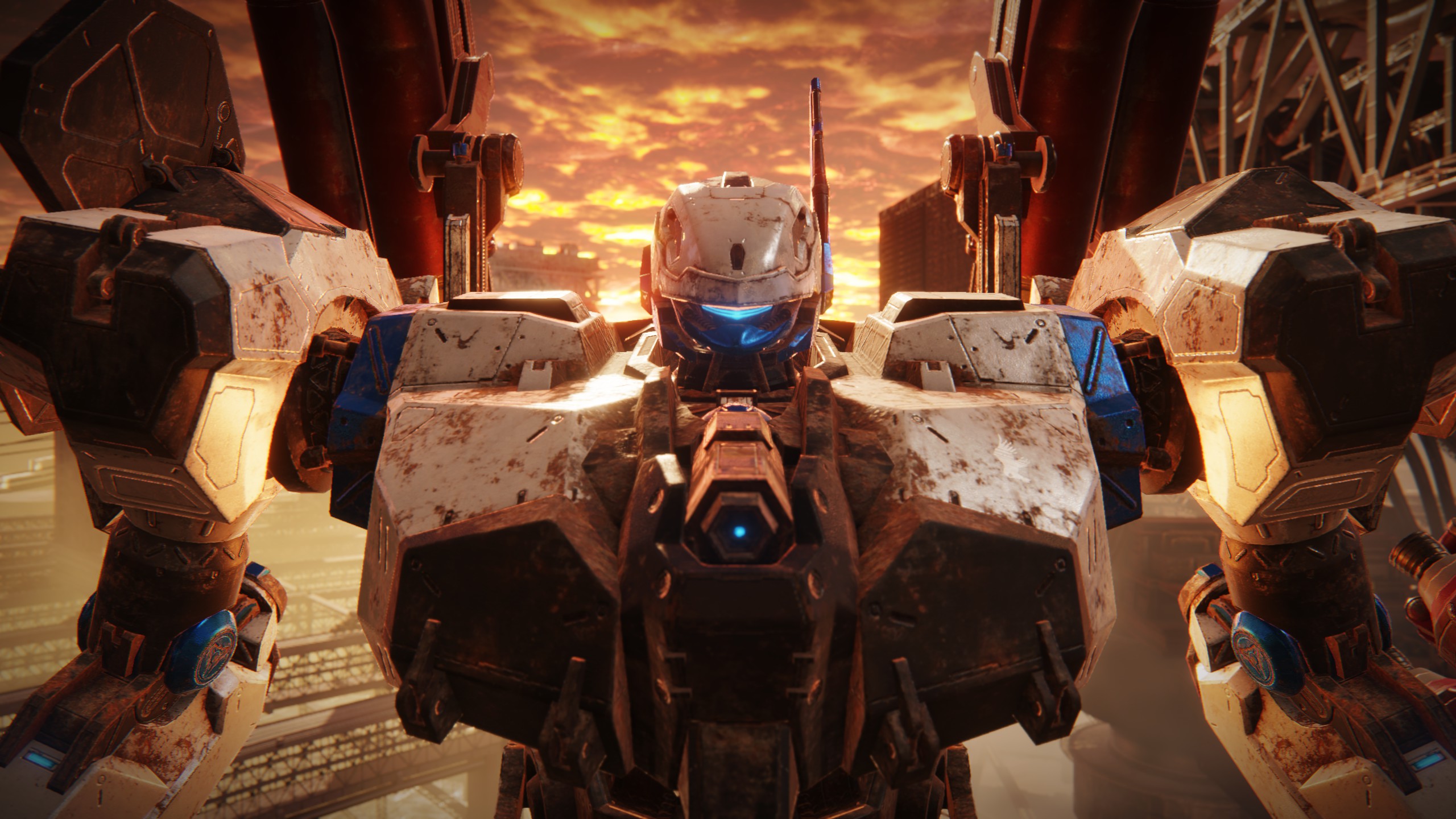Our Verdict
The coolest mechs in gaming history form the core ( ͡° ͜ʖ ͡° ) of an intense, focused action game.
PC Gamer's got your back
After FromSoftware's incredible run from Souls to Sekiro to Elden Ring, Armored Core 6 is a near-radical departure: short, relentlessly paced missions, forgiving retries, and an empowering arsenal that makes it clear you are a one mech army instead of some nasty little guy. Its lean approach holds it back in a few minor ways, but a big budget game this dead set on what it is and what it is not is a precious thing in 2023.
What is it? All-out mecha action
Release date August 24, 2023
Expect to pay £50 / $60
Developer FromSoftware
Publisher Bandai Namco
Reviewed on Intel Core i5-13600K, RTX 3070, NVME SSD, 32GB DDR4-4000
Steam Deck Playable
Multiplayer? Yes
Link Official site
It may have taken FromSoftware a decade to return to its love of mechs, but it was worth the wait: Armored Core 6 is a "we're back on our bullshit" slam dunk.
This would be a great action game in any year, but I'm particularly smitten with Armored Core at this exact moment in time, sandwiched between epic 100-hour RPGs and following the mainstream success of the boundless Elden Ring. It could scarcely be more Elden Ring's opposite: instead of being dumped into a wide open world, you select missions from a menu and then deploy your mech after a short briefing. Missions are usually over inside 10 minutes and are 100% protein, either hurling you straight into a short frenzied battle or peppering larger environments with snack-sized combat encounters that culminate in 1v1 showdowns against other ACs or massive bosses. After each, returning to the menu to tinker with your AC and buy new parts is a well-earned exhale.
I can imagine concocting these scenarios in a childhood sandbox, staging my action figures for battle atop moist parapets and upside-down bucket mountains and then knocking them over one-by-one with my favorite Gundam. Remember making the sounds of explosions and laser beams with your mouth as your toys met their operatic ends?
Armored Core 6's missions are that simple in construction and that thrilling in action. It allows you to snap together the pieces of your ultimate mech and then manifests those imagined backyard battles with a pink and neon green death machine (should you choose to go wild with the paint options) that can make it rain lasers and hellfire, no mouth sounds needed. AC6 prizes nothing as much as fulfilling the fantasy of piloting one of these immense metal machines and feeling incredibly cool while you do it.
Fashion cores
After a decade of making games about overcoming immense adversity, FromSoftware has made one in which you're an apex predator
This is Top Gun: Maverick for anime nerds like me who grew up enraptured by Mobile Suit Gundam instead of F-14s. I will have to spend the next few months restraining myself from commandeering Discord chats to talk about the articulation of these mechs, and the little jolts of glee I got from watching each individual thruster change direction as I skated along the ground. And watching the hot flames flickering out and turning to steam when standing still. And the neon bloom of a plasma blade felling a lowly mech or an entire battleship in one charged up blow.
I always find one sound effect to hyperfixate on in a FromSoftware game—in Dark Souls, it's the bwaaam of parrying with your shield, a sound so concussive it gives "anti-tank rifle" rather than "little guy swinging his arm through the air." It's ludicrous, but it also makes perfect sense for the most powerful sound effect in the game to play when you are, for just a moment, literally invincible. Halfway through Armored Core 6, I found it: for the next 12 hours I punctuated every mission with the DUN-DUN of a Songbirds, a shoulder-mounted cannon that fires two anti-tank rounds in a devastating burst.
Each shot packs six times the explosive power of a single missile and far more impact damage, sending heavily armored four-legged mechs reeling when I score a clean hit. With Songbirds mounted on each shoulder I could even stagger bosses in a single volley—DUN-DUN, DUN-DUN—opening them up to extra damage from a slash of my laser blade. That staccato explosion became the death knell for every other mech on Rubicon until I rolled credits.



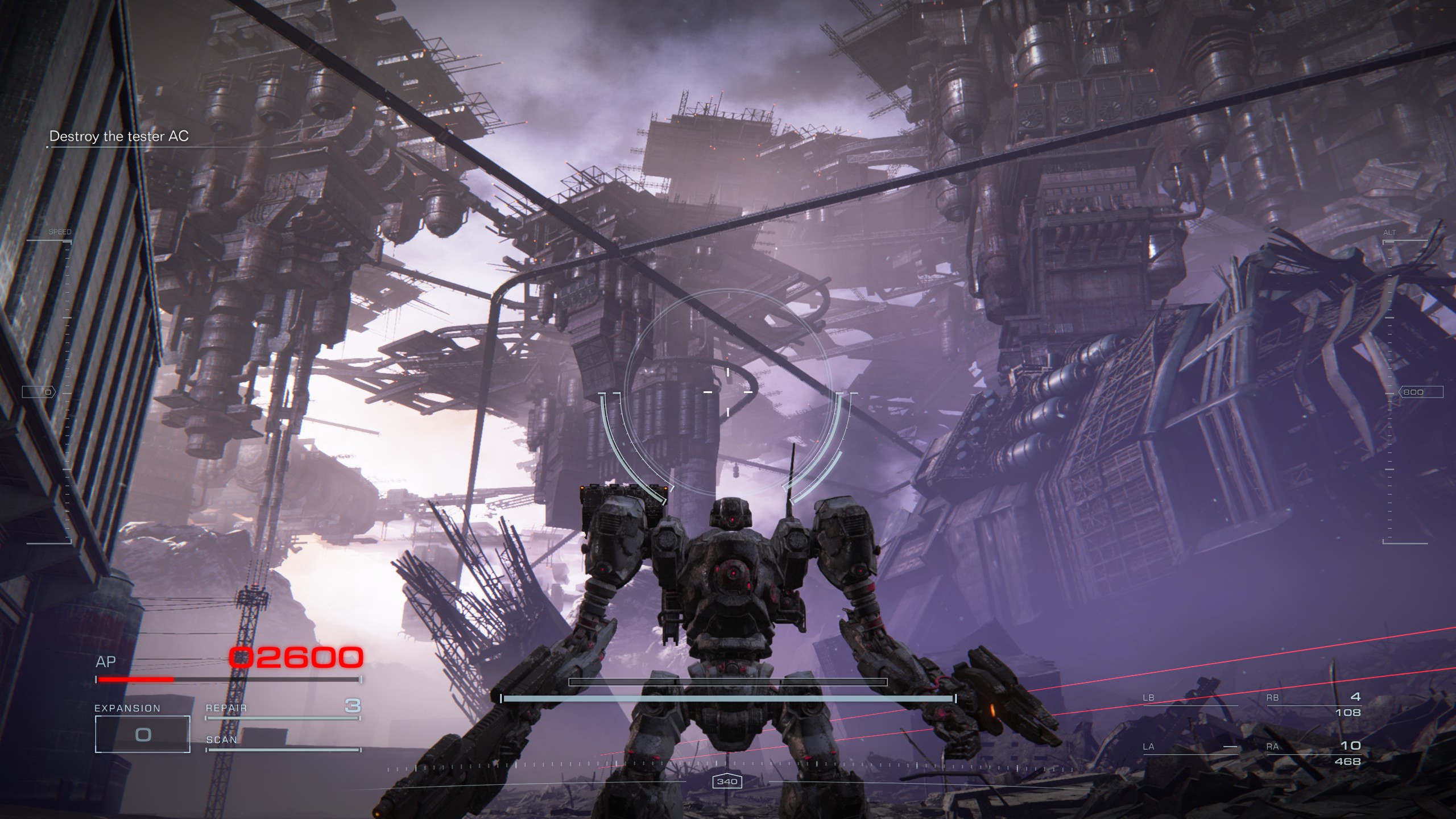
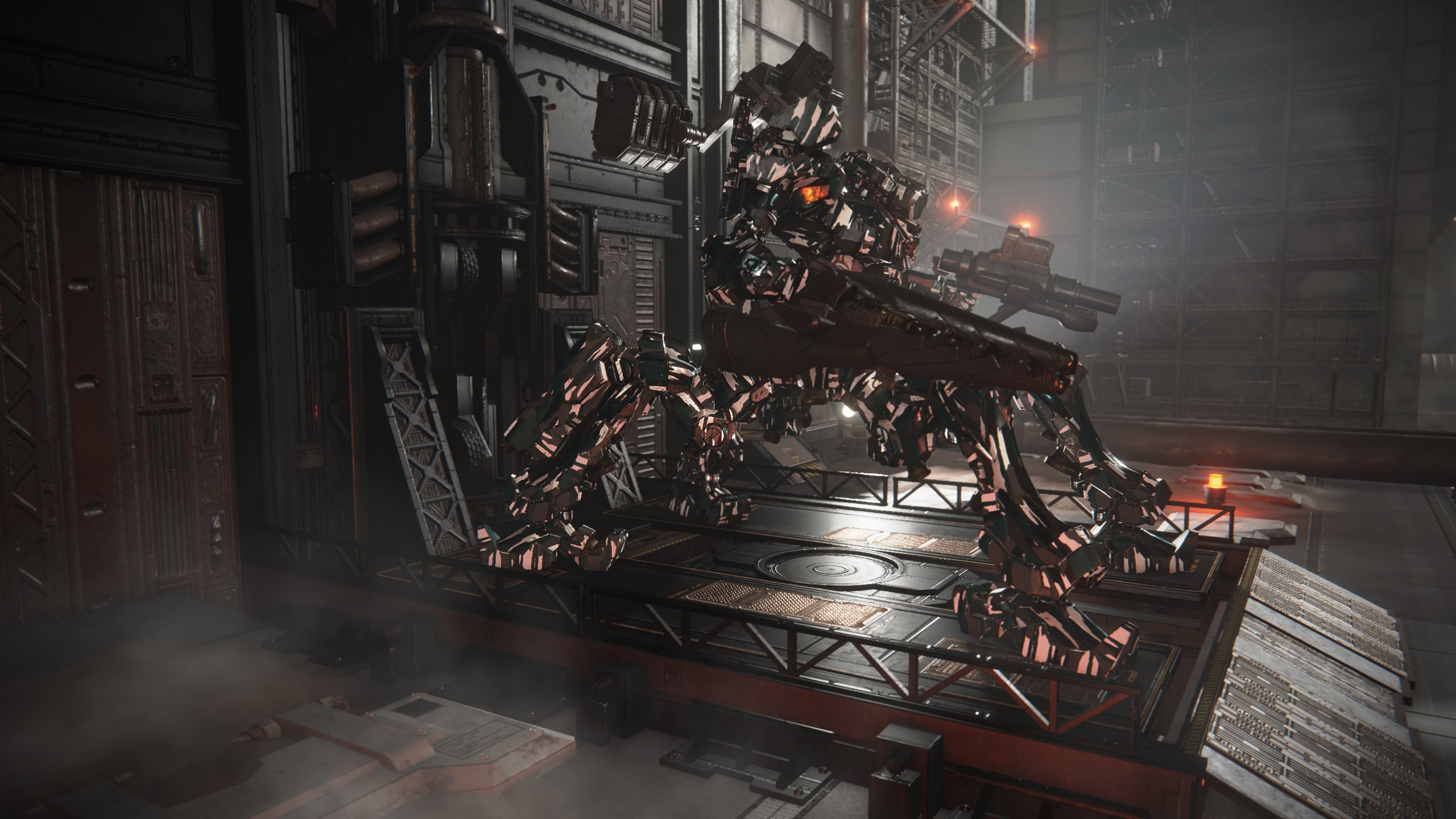

Helping sell the "hell yeah mechs rule" tone is Armored Core 6 being FromSoftware's first PC game to support frame rates over 60 fps. While it's still lacking some of the bells and whistles we like in modern PC games, like DLSS or FSR upscaling support, the game ran fantastically on my PC (Intel Core i5-13600K, RTX 3070) with the 120 fps limit enabled, easily sailing past 60 fps and only stuttering when I got too trigger happy with the Steam screenshot key.
This is probably where I should say the graphics aren't that impressive for a modern big budget game, and that the presentation is fairly modest compared to a Cyberpunk 2077 or Sony's Spider-Mans. But everything on the mechs is so lovingly animated I can't say I was bothered by the relative simplicity. When I tried Armored Core 6 on the Steam Deck, I was able to get between 40 and 60 fps by turning all the settings down to low. It's absolutely playable on the Deck, but I was immediately mourning the loss of that crisp image I got on my 1440p monitor, and how much of the mech detail I was missing on those lower settings and smaller screen. I enjoy the flash of the energy weapons and the smoke trails on a flurry of missiles too much to be squinting at a handheld.
There should be a line in the credits just for the designer who dialed in the way the killing blow in every mission triggers a slow motion explosion, stretching that instant into 10 seconds of glory. It's the most important decision anyone made in the course of designing this entire videogame.
View post on imgur.com"
I don't mean that as a joke: after a decade of making games about overcoming immense adversity, in AC6 FromSoftware has made one in which you're an apex predator. Though you acquire more powerful weapons and thrusters and other upgrades, from the beginning I felt incredibly capable: tapping the quick boost button to dodge incoming missiles, clicking a gamepad stick to rocket forward into a full thrust "assault boost" that added extra impact to my melee attacks.
Lenient checkpoints let you tackle almost every tough battle with replenished ammo and healing items without retreading your progress up to that point in the mission. When continuing you can also swap out any AC parts in your garage. It's a savvy structure that encourages experimentation—there's no reason not to give a boss fight a shot with a different set of weapons or a heavier or faster AC.
Powered up


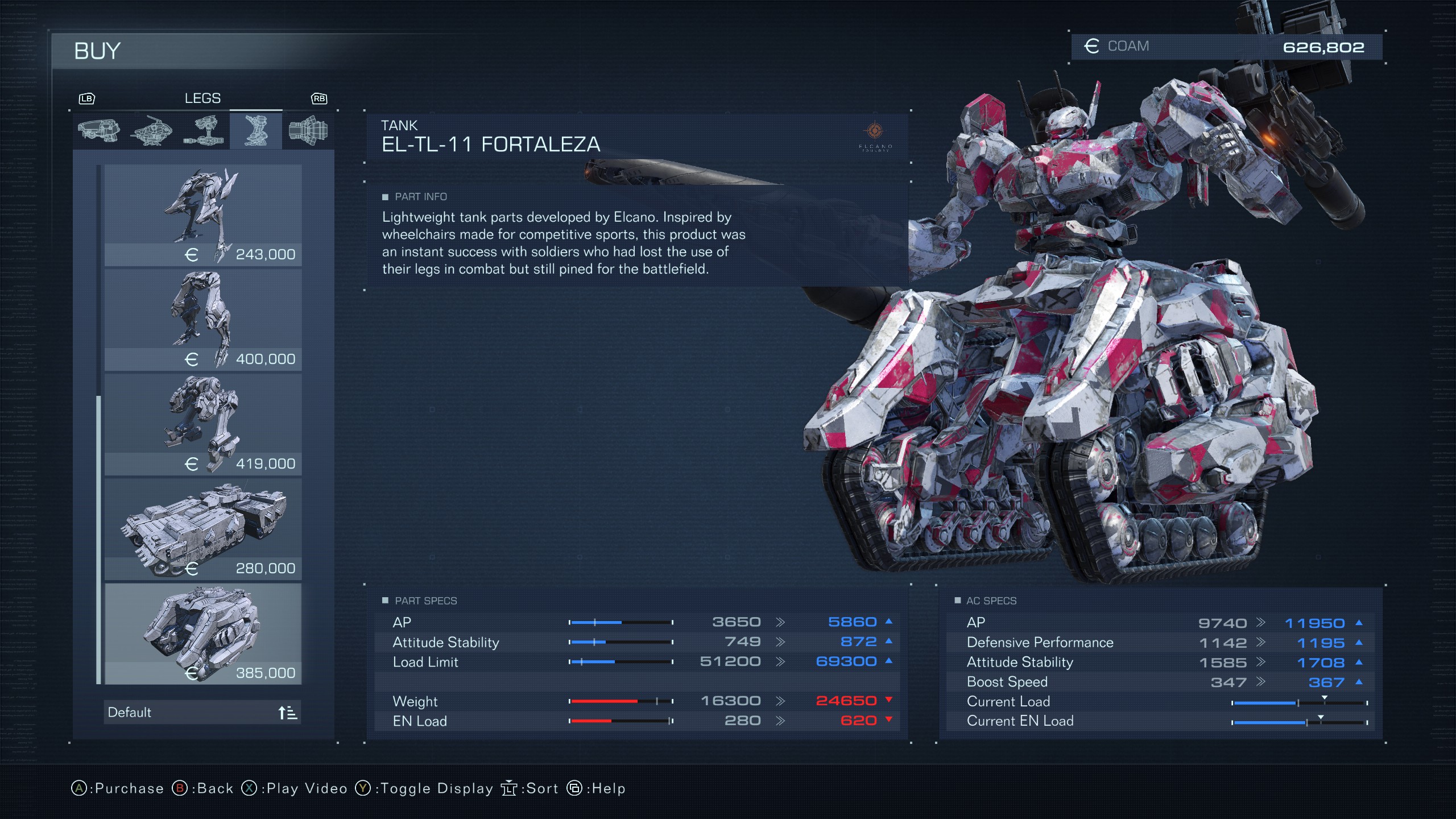

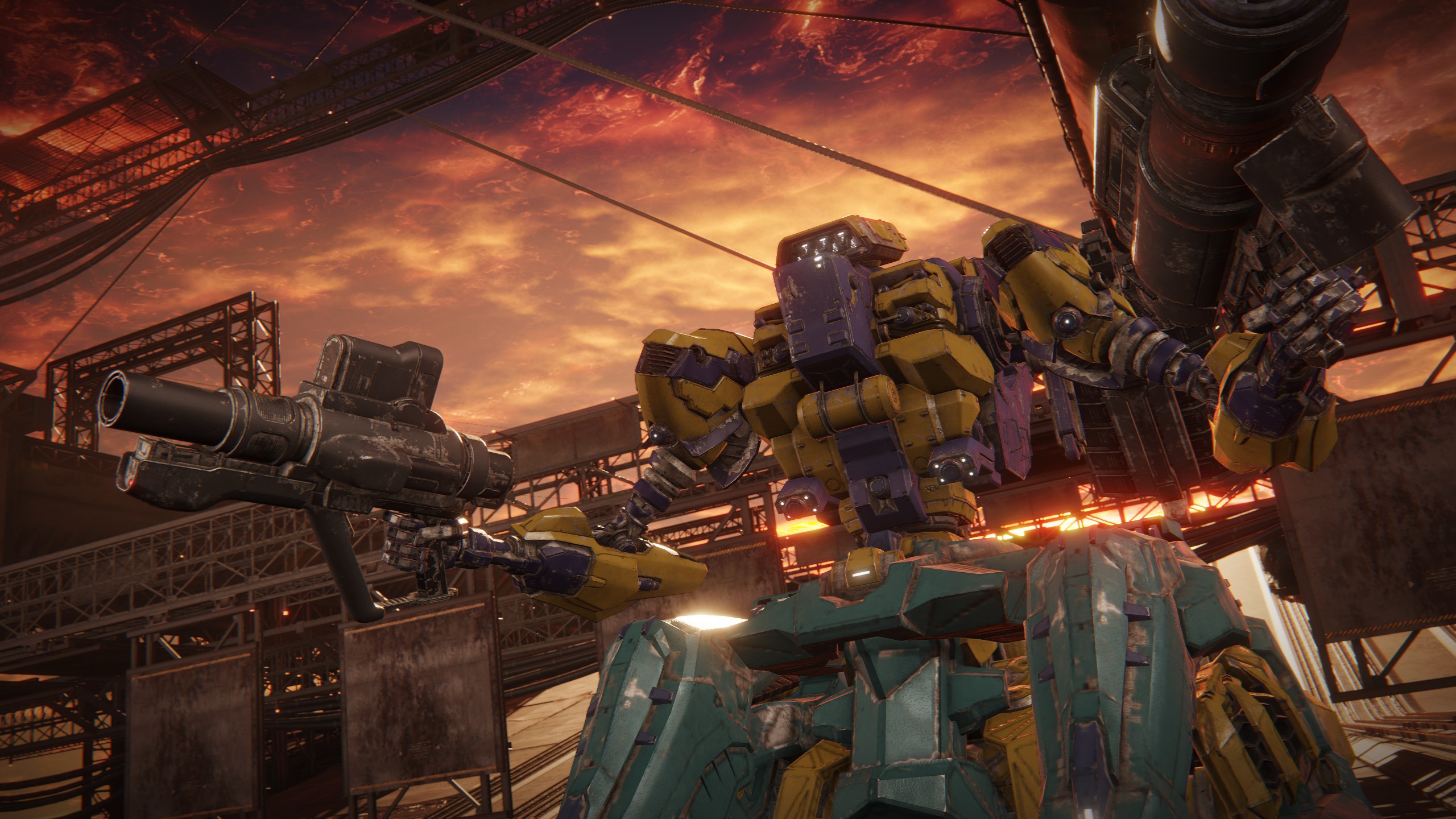
The sparse cutscenes are potent, like an IV drip of mecha fan service
Purists need not despair over FromSoftware going soft: you can still replay missions and pursue S Ranks by winning without restarting or taking advantage of a resupply. And this is still a damn hard videogame in spots, with one boss near the end that took me three hours and dozens of tries to overcome. It was the only moment that struck me as a pure 'git gud' skill check, where experimenting with different builds and strategies felt completely futile. At least for me, that boss was an overtuned aberration alongside so many others that were tough, but better balanced FromSoftware's usual demand for reflexes with a puzzley invitation to tinker my way to exactly the right mech for the job.
While Armored Core 6's assembly menu offers stats on each part, while retrying duels against the elite ACs that could fly circles around me I did wish for more detailed feedback on how swapping one targeting module for another would affect my crosshair's accuracy, or how much faster my boost gauge would recharge if I built a mech with a lighter energy draw. Exposing the minutia of these systems in something resembling Street Fighter 6's training mode would allow for fine-tuning a design.
Across 25 hours with Armored Core 6, my only other tinge of disappointment came from the environments, which are stunning snapshots of a crumbling technodystopia that offer no interactivity beyond a few hidden chests and wrecked mechs with tiny scraps of lore. On the whole AC6's lean, focused nature is a great strength, but there's so much atmosphere in the world's visual design that it ends up underutilized. The voice in my ear as you fight could easily have chimed in more often as I explored nooks and crannies; some of the larger stages offer time and space to poke around, but practically nothing to find.
It's a minor missed opportunity in a game that's surprisingly heavier on explicit story than FromSoftware's RPGs.
That's so raven
There's more in-your-face narrative here than in all three Dark Souls games combined, as the leaders of Rubicon's corporate mercenary squads regularly send you voice messages after each sortie to chit-chat about the aftermath of whatever you've just blown up. The option to replay missions makes it easy to ignore in favor of your own stories: Could you grasshopper-leap your way to an objective with a mech built for verticality, leaving the ground defenses left in your dust? Could the thick cloud of drones taking annoying potshots at you in another mission be wiped out in a single volley of multi-lock missiles with a range-focused build?
There's a slight "we saved a bunch of money by not animating any of this" feel to most of the story playing out in voiceover monologues, but that also means the sparse cutscenes are potent, like an IV drip of mecha fan service. They only mash that button so many times, but each time it feeds back into that core guiding principle: mechs are cool.
View post on imgur.com"
As in classic Armored Core, I love how ruthlessly AC6 maintains its tone. Pilots do not have lives outside their machines. You will never see a human being. Every alliance is temporary as the corporations competing for Rubicon's resources will hire you to backstab the pilots you just fought alongside.
The narrative branches at a few points based on which missions you choose to take and who you choose to kill—with an insidiously brilliant knife twist that the story path I think most people will want to go down presents some much harder battles, with an easier option there to taunt you. Nothing sells corporate dystopia better than screwing over those who've stuck their necks out for you. The story even gives you a reason to keep playing after the credits roll: on your second run, those hard choices begin to splinter off into new paths.
After hours of building up a kinship with those voices I heard so many times over the comms, I felt bad about shooting them down. But not, like, bad bad, because I was just there to do a job. I was there for that slow-mo glory kill. I was there to get paid, to build a better mech, so I could do it all again better, faster, and cooler. This is Armored Core. We are blessed to have it back.
The coolest mechs in gaming history form the core ( ͡° ͜ʖ ͡° ) of an intense, focused action game.

Wes has been covering games and hardware for more than 10 years, first at tech sites like The Wirecutter and Tested before joining the PC Gamer team in 2014. Wes plays a little bit of everything, but he'll always jump at the chance to cover emulation and Japanese games.
When he's not obsessively optimizing and re-optimizing a tangle of conveyor belts in Satisfactory (it's really becoming a problem), he's probably playing a 20-year-old Final Fantasy or some opaque ASCII roguelike. With a focus on writing and editing features, he seeks out personal stories and in-depth histories from the corners of PC gaming and its niche communities. 50% pizza by volume (deep dish, to be specific).
